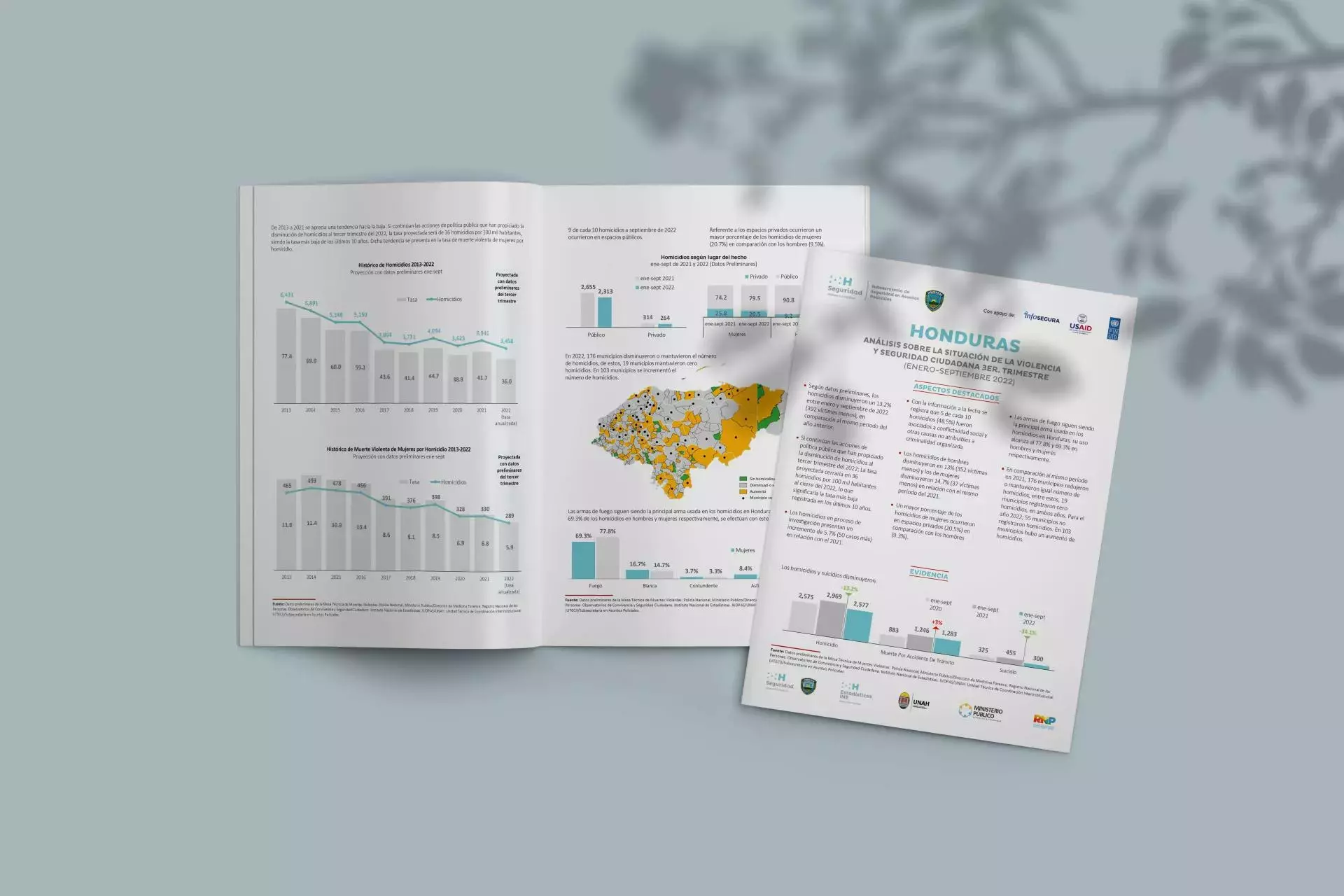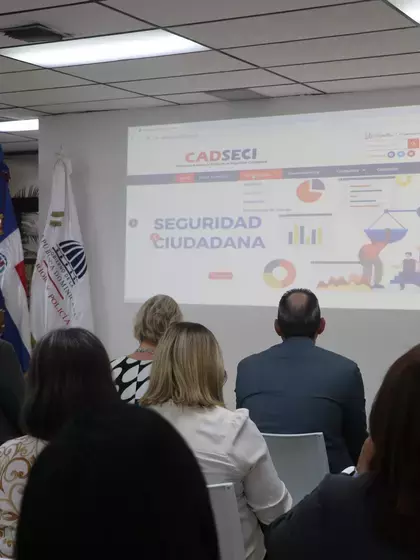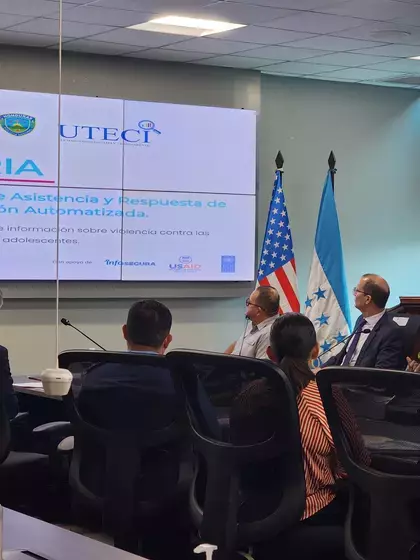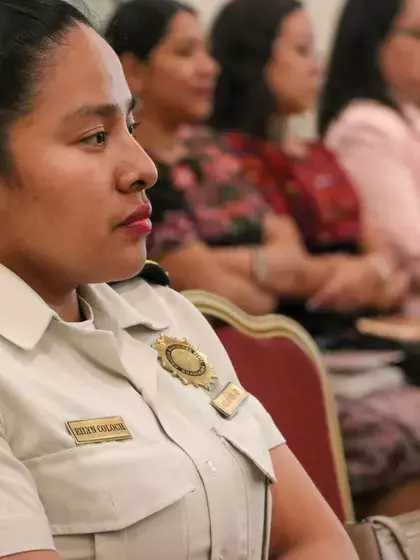Analysis of violence and citizen security in Honduras January-September 2022

The Secretariat of Security with the support of the United Nations Development Programme (UNDP) and the United States Agency for International Development (USAID) by way of the InfoSegura Regional Project present the "Analysis of the State of the Violence and Citizen Security in the third quarter from January to September 2022."
According to preliminary data, between January and September 2022, homicides fell 13.2% (392 fewer victims), suicide declined 34.1% (115 fewer victims) and traffic related deaths increased 3% (37 more victims), as compared to the same period the previous year.
The number of homicides under investigation has risen 5.7% (50 more cases) as compared to 2021. According to information available to date, 5 in 10 homicides (48.5%) were due to social conflict and other causes not attributable to organized crime.
Young people between the ages of 18 and 30 are still the primary victims of homicide (40% of all victims). Firearms remain the main weapon used in homicides in Honduras. They are used in 77.8% and in 69.3% of cases involving males and females, respectively.
Male homicide decreased 13% (352 fewer victims) and female homicide decreased 14.7% (37 fewer victims) as compared to the same period in 2021. A higher percentage of homicides of women took place in public spaces (79.5%) notwithstanding the fact the higher percentage (20.5%) of female homicides in private spaces as compared to men (9.3%)
As compared to the same period in 2021, 176 municipalities had the same number of homicides, among these, 19 municipalities registered zero homicides both years. In 2022, 55 municipalities recorded no homicides and in 103 municipalities there was a rise in the number of homicides.
If the public policy actions that led to a reduction in homicides during the third quarter in 2022 continue, then the rate projected will be 36 homicides per 100,000 population, which is the lowest in the last 10 years.
In addition, initial findings are used to present the risk analysis of the 16 selected municipalities with the highest incidence of homicides and 16 municipalities that exhibit zero homicides, using the composite index for risk management (INFORM) in dimensions that measure: a) Danger and exposure to natural and human threats, b) socioeconomic vulnerability, and vulnerable groups, and c) lack of institutional and infrastructure capacity.
This analysis is the result of coordinated efforts of the Secretariat of Security's Sub-Secretariat for Security in Police Affairs in Honduras, and national institutions that produce information on citizen security, [1] with UNDP and USAID support through the InfoSegura Regional Project, in order to strengthen the country's official capacity for developing evidence-based public policy that is gender-responsive, with a significant prevention component with quality, consensus and transparency.
Preliminary data to date are available on the website: www.seguridadatosabiertos.gob.hn as well as information for the third quarter of January to September 2022. Data is updated according to verification by the responsible institutions and fieldwork by technicians of the Technical Inter-Institutional Coordination Unit (UTECI) of the Secretariat of Security's Sub-Secretariat for Security in Police Affairs in Honduras.
[1] Source: Preliminary data provided by Working Group on Violent Deaths: National Police, Public Ministry/Directorate of Forensic Medicine. National Registry of Persons. Citizen Coexistence and Security Observatories. National Statistics Institute. IUDPAS/UNAH. Technical Inter-Institutional Coordination Unit (UTECI)/Subsecretary for Police Affairs.
NFORM RISK 2021. Composite index for risk management INFORM https://drmkc.jrc.ec.europa.eu/inform-index/INFORM-Subnational-Risk/Honduras
- To view the third quarter 2022 one pager, click here.
- To view the full 2022 third quarter analysis one pager, click here.
- To view the third quarter one pager, click here.
This article was originally published on the UNDP Honduras website.





